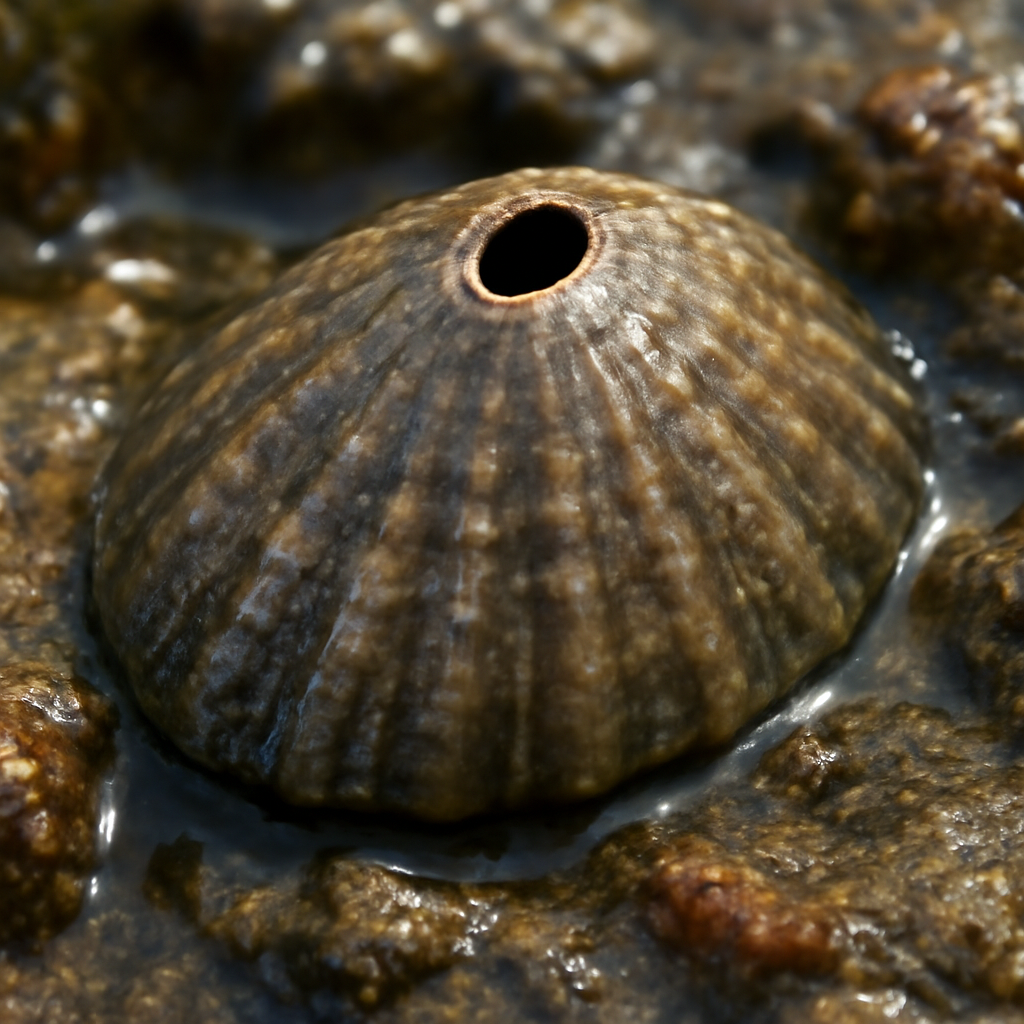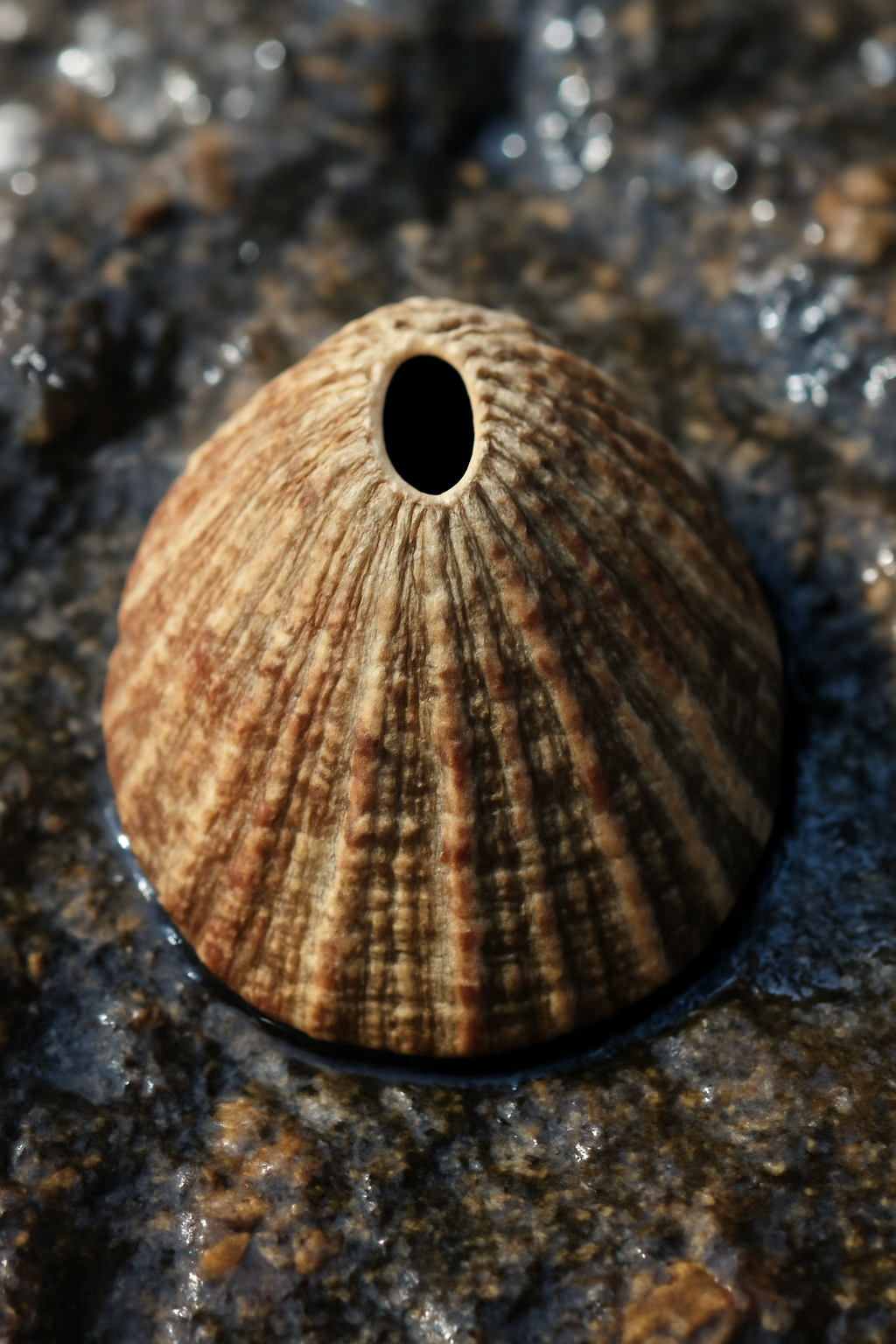Fissurella: Morphology, Classification, Habitat, and Ecological Role of the Keyhole Limpets
Fissurella is a genus of marine gastropod mollusks commonly known as keyhole limpets due to the distinctive hole or slit located at the apex of their conical shells. These limpets are part of the family Fissurellidae and are widely distributed in marine environments, from intertidal zones to deeper waters. Unlike true limpets, keyhole limpets possess this unique shell opening which functions in respiration and excretion by directing water currents. Fissurella species are grazers, scraping algae and biofilm off rocky substrates, playing an essential role in coastal ecosystems. Their shell morphology and other anatomical features have evolved adaptations that withstand wave impacts and predation.
Classification of Fissurella
| Taxonomic Rank | Name | Characteristics |
|---|---|---|
| Kingdom | Animalia | Multicellular, eukaryotic organisms |
| Phylum | Mollusca | Soft-bodied animals with a muscular foot |
| Class | Gastropoda | Snails and slugs with a single, often coiled shell |
| Subclass | Vetigastropoda | Primitive marine gastropods with nacreous shells and multiple gills |
| Order | Lepetellida | Limpet-like gastropods with simple shells and gills |
| Family | Fissurellidae | Keyhole and slit limpets with apical or subapical shell openings |
| Genus | Fissurella | Keyhole limpets with an apex hole for exhalant water flow |

Habit and Habitat
Fissurella species are typically found clinging to hard substrates such as rocky shores, boulders, and coral reefs, often within the intertidal and subtidal zones. These gastropods tolerate wide ranges of wave exposure, with their low-profile shells reducing drag and damage during high-energy water movement.
They use their muscular foot to hold tightly to substrates, with the shell keyhole providing ventilation necessary in these oxygen-variable environments. Feeding is accomplished by their radula—a scraper-like tongue—that removes algae and encrusting organisms from surfaces.
The unique shell structure allows Fissurella to maintain efficient respiration while tightly attached to rocks, as water enters beneath the shell edge and exits through the apical opening.
Geographical Distribution
The genus Fissurella boasts a worldwide distribution in temperate and tropical seas. Species like Fissurella volcano are commonly found in the eastern Pacific, while others inhabit Atlantic coastal regions, including the Mediterranean Sea. Their adaptability to various marine environments accounts for a broad range, from shallow intertidal areas to several hundred meters depth.

General Characteristics
- Commonly called as Key-hole limpet.
- Shell is oval, compressed, non-spiral and having a small apical shell aperture which looks little volcanic crater.
- Shell protects the animal from the impacts of the waves.
- Ventral foot is large, sole-like and is used as sucker for clinging to rocks.
- Foot bears on either side an epipodial ridge bearing a row of cirri or epipodial tentacles.
- Operculum is absent. Head contains mouth or apical shell aperture and pair of sensory tentacles.
- Shell Morphology: Conical, cap-shaped shells with an opening (keyhole or slit) at or near the apex.
- Shell Size: Ranges widely, with species from small (~3 mm) to large (~13 cm) in length.
- Color and Pattern: Shells exhibit diverse coloration—striped, spotted, or patterned with browns, whites, reds, and purples.
- Radula: Similar to true limpets but adapted for scraping microalgae.
- Foot: Broad and muscular, providing firm adhesion to substrate.
- Mantle and Cilia: Mantle extends beneath the shell margin; cilia aid in water circulation.
- Respiration: Water drawn under the shell edge passes over paired gills; exhalant water leaves through the apex hole.
- Sensory Structures: Eyes and tentacle-like structures on epipodial grooves for environmental sensing.
- Operculum: Absent in this genus; relies on shell closure for defense.
Special Features
- Keyhole Apex: Unique hole facilitates exit for exhalant water and waste, maintaining water flow for respiration and excretion.
- Shell Sculpture: Shells bear radial ribs and reticulate textures enhancing structural strength.
- Hydrodynamic Shape: Low-profile shell minimizes dislodgement by waves.
- Feeding Adaptations: Radula with magnetite-hardened teeth effectively scrapes algae.
- Chemical Defense: Some species may secrete unpleasant chemicals to deter predators.
- Reproductive Structures: Gonochoric with larval planktonic stages allowing dispersal.
Identification
Identification is primarily based on:
- Shell size, shape, and coloration patterns.
- Configuration and size of the apical keyhole or slit.
- Radial ridges and sculpture texture on shells.
- Anatomical examinations of internal organs, radula, and reproductive features.
- Molecular genetic analysis increasingly aids species differentiation due to morphological similarities.
Life Cycle and Reproduction
Fissurella species reproduce sexually with distinct males and females. Spawning usually involves synchronized release of gametes into the water column during seasons influenced by environmental factors such as temperature and food availability.
Fertilization occurs externally, and embryos develop into planktonic trochophore and veliger larvae before settling to the benthos to metamorphose into juveniles. Larval dispersal supports gene flow and colonization of new habitats. Lifespan varies among species and environmental conditions, generally spanning several years.

Ecological Role and Importance
- Grazers: Control algal populations on rocky shores, preventing overgrowth and enhancing biodiversity.
- Habitat Modifiers: Their grazing influences microhabitat conditions affecting community structures.
- Prey Items: Serve as food for sea stars, crabs, fish, and birds.
- Bioindicators: Sensitive to pollutants and ecosystem changes, useful in environmental monitoring.
- Scientific Interest: Studies of shell formation, radula composition, and evolutionary relationships provide insights into molluscan biology.
References
- https://en.wikipedia.org/wiki/Fissurella
- https://en.wikipedia.org/wiki/Fissurellidae
- https://www.inaturalist.org/taxa/64147-Fissurella
- https://www.britannica.com/animal/Fissurella
- https://www.inaturalist.org/taxa/710405-Fissurella-angusta
- https://en.wikipedia-on-ipfs.org/wiki/Fissurella_barbouri
- https://www.wikiwand.com/en/articles/Fissurella_angusta
- https://www.mindat.org/taxon-5797418.html
- https://animalia.bio/fissurella-macrotrema
- https://wikipedia.nucleos.com/viewer/wikipedia_en_all_maxi_2024-01/A/Fissurella_maxima
